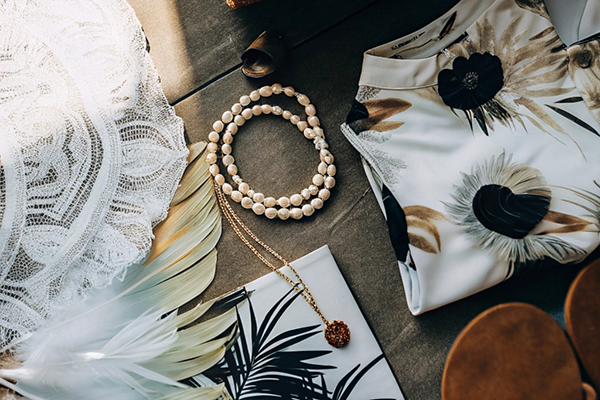Brazil’s vibrant culture, rich history, and diverse geography have influenced its fashion in distinctive ways. From traditional attire that reflects the country’s indigenous and colonial roots to modern styles that embrace bold colors and tropical patterns, Brazil’s clothing is as dynamic as its people.
Brazil is famous for its traditional costumes like the Bahia dress1, carnival attire2, and samba-inspired outfits, as well as its innovative modern fashion that celebrates tropical themes and sustainable practices3.
This article explores Brazil’s traditional clothing, its unique characteristics, and the impact of these styles on contemporary Brazilian fashion.
What Is the Traditional Brazilian Costume?
Traditional Brazilian clothing reflects the country’s rich cultural heritage, blending indigenous, African, and European influences.
The most iconic traditional Brazilian costumes include the Bahiana dress1, Gaucho attire4, and festive Carnival outfits2.

1. Bahiana Dress
- Origin:
- Worn by women in the Bahia region, influenced by African cultures brought over during colonial times.
- Description:
- Features a full, long skirt, a lacy blouse, and a colorful headwrap, often paired with beads and bracelets.
- Significance:
- Associated with Candomblé religious ceremonies, symbolizing Afro-Brazilian cultural pride.
2. Gaucho Attire
- Origin:
- Traditional clothing of southern Brazil, reflecting the cattle ranching lifestyle in Rio Grande do Sul.
- Description:
- Men wear bombachas (wide trousers), boots, scarves, and a wide-brimmed hat; women wear long, modest dresses.
- Significance:
- Embodies rural traditions and the spirit of Brazilian cowboys.
3. Carnival Costumes
- Origin:
- Carnival is a renowned Brazilian festival with costumes influenced by African and Portuguese traditions.
- Description:
- Outfits feature bright colors, sequins, feathers, and intricate designs tailored for samba performances.
- Significance:
- Reflects Brazil’s creativity, festivity, and cultural unity.
| Costume | Key Features | Cultural Significance |
|---|---|---|
| Bahiana Dress | Full skirt, lace blouse, colorful headwrap | Afro-Brazilian pride and religious tradition |
| Gaucho Attire | Wide trousers, boots, scarves | Reflects southern Brazil’s cowboy culture |
| Carnival Costume | Sequins, feathers, bold colors | Celebration of Brazil’s festive spirit |
What Are Some Characteristics of Brazil’s Traditional Clothing?
Brazil’s traditional clothing is defined by vibrant colors, natural materials, and designs that honor the country’s multicultural background.
Key characteristics include bold patterns, lightweight fabrics, and connections to climate and culture.

1. Vibrant Colors and Patterns
- Why They Matter:
- Reflect tropical landscapes and Brazil’s joyful cultural expressions.
- Examples:
- Carnival costumes, floral and geometric motifs.
2. Use of Natural Materials
- Common Fabrics:
- Cotton, linen, lace for breathability in warm climates.
- Eco-Friendly Practices:
- Indigenous communities use straw, feathers, and beads, showcasing sustainability.
3. Multifunctional Designs
- Practicality:
- Suitable for hot weather, religious events, and social gatherings.
- Cultural Adaptation:
- Blends indigenous, African, and European elements.
| Characteristic | Details |
|---|---|
| Vibrant Colors | Reflect tropical landscapes and joyfulness |
| Natural Materials | Suited for warm climates, eco-friendly |
| Multifunctional Designs | Adaptable for various cultural purposes |
The Influence of Traditional Clothing on Modern Brazilian Fashion
Traditional attire continues to inspire Brazilian designers, influencing both local and global trends.
1. Tropical Aesthetics
- Bold Prints and Colors:
- Brands like Farm Rio incorporate tropical motifs into their collections.
- Global Appeal:
- Brazilian aesthetics influence international resort wear and summer fashion.

2. Sustainability in Fashion
- Traditional Techniques:
- Indigenous practices inspire modern eco-friendly approaches.
- Notable Brands:
- Osklen and Natura Brasil integrate sustainable methods, blending tradition with innovation.
3. Celebration of Heritage
- Carnival’s Impact:
- Inspires haute couture and avant-garde designs.
- Cultural Festivals:
- Events like Festa Junina preserve traditional attire’s relevance.
| Modern Influence | Example |
|---|---|
| Tropical Aesthetics | Farm Rio’s bold prints |
| Sustainability | Osklen’s eco-friendly collections |
| Celebration of Heritage | Carnival-inspired haute couture |
Conclusion
Brazil’s clothing reflects a rich tapestry of cultural influences, evident in iconic costumes like the Bahiana dress, Gaucho attire, and Carnival outfits. These garments, characterized by vibrant colors, natural materials, and multifunctional designs, continue to inspire contemporary Brazilian fashion.
As brands embrace sustainable practices and global audiences embrace Brazilian aesthetics, Brazil’s influence on the international fashion landscape will continue to flourish, honoring tradition while evolving into the future.
-
Examines historical roots and Afro-Brazilian influences on Bahiana dress. ↩ ↩
-
Highlights the evolution and cultural importance of carnival outfits. ↩ ↩
-
Identifies Brazilian brands blending tradition with eco-friendly practices. ↩
-
Explores Gaucho attire’s significance in southern Brazilian culture. ↩













